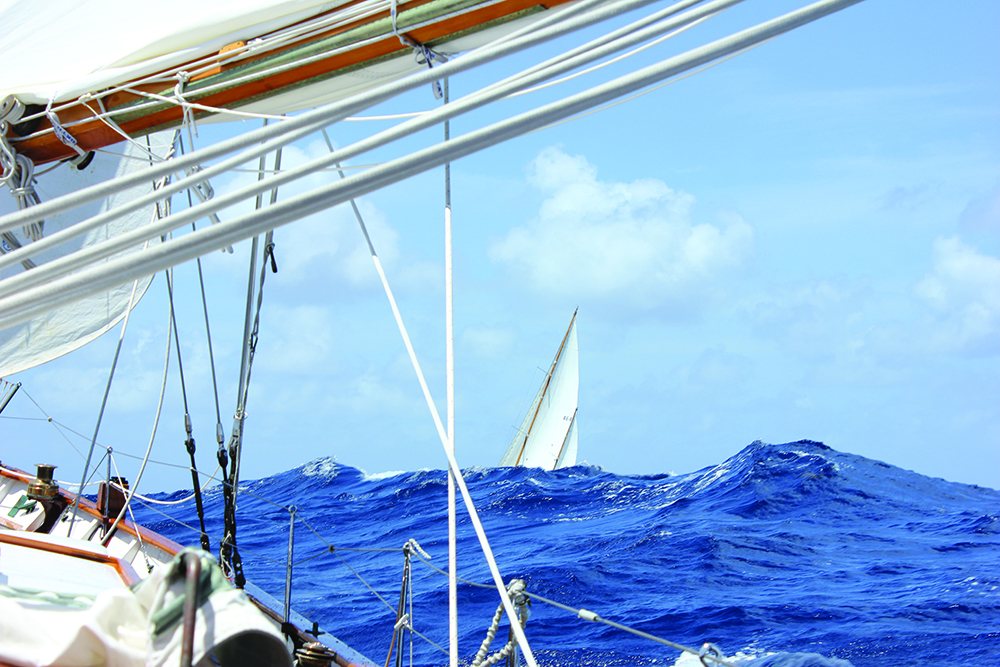Living Through The Gale - Wind & Waves
Book Extract
WIND & WAVE
Wind is what sailing is all about. Wind stirs up the surface of the sea and makes waves, and it is waves which are most likely to spoil our day.

Waves
At sea in hard weather the three primary sources of danger are wind, sea state and poor visibility. Unless it rises to extremes, wind alone is rarely a problem for a wellfound vessel. A good navigator, whether electronically assisted or not, can handle a lack of visibility effectively. Waves, however, are a different story.
Waves shake and wring a boat like a terrier with a rat, and sometimes they explode against her like a sledgehammer. They test her sternly every time she makes a passage and should she be found wanting in any of her many departments, we have problems.
Waves cause skipper and crew to get wet and, in consequence, cold. They make many of us seasick and can, by this means, reduce a capable hand to a human liability for the duration of a rough passage. Even if we are not sick, waves still make the yacht jump about like a crazy thing, rendering such niceties as cooking and navigation near-impossible sophistications.
Waves can also overwhelm us, roll us over and, in the end, drown us. We need to give them some serious thought.
Waves in practice
An ideal series of waves never normally appears at sea. This is because the wind varies, not only in strength, but also in direction. In any case, there is nearly always an old sea left over or another one coming from somewhere else, or both, or worse, such as when tide or current runs contrary to the flowing air.
In real life, because of variations in wind velocity, all the waves in a given series do not travel at exactly the same speed, so from time to time one catches up with another. When this happens the two can combine to produce a wave half as big again as the regular wave height being experienced. These are not the ‘freak waves’ beloved of the media. They are predictable and appear in wave height tables as ‘probable maximum wave height’.
Windshifts
The vast majority of gales and good solid blows will, at some stage of their lives, give their victims the benefit of a substantial windshift.
It stands to reason that if you have an established army of contented 25-foot seas marching uniformly out of the west and you suddenly remove their motive force to replace it with a new one from a different direction, the waves are going to get confused. Unfortunately, when they are subjected to this indignity, they don’t all suddenly execute a right wheel and stride away before the new wind. Instead, they maintain their progress towards the east while a new bunch begins marching over the top of them. The results are evil. Mostly the combatants sidle around one another with less fuss than one might expect, but when two big ones meet in confrontation they either rear up in a tower of breaking water and collapse in chaos on the spot, or they get together in a sort of lethal truce and go thundering away like a salt-water avalanche, very dangerously if you happen to be in the way.
